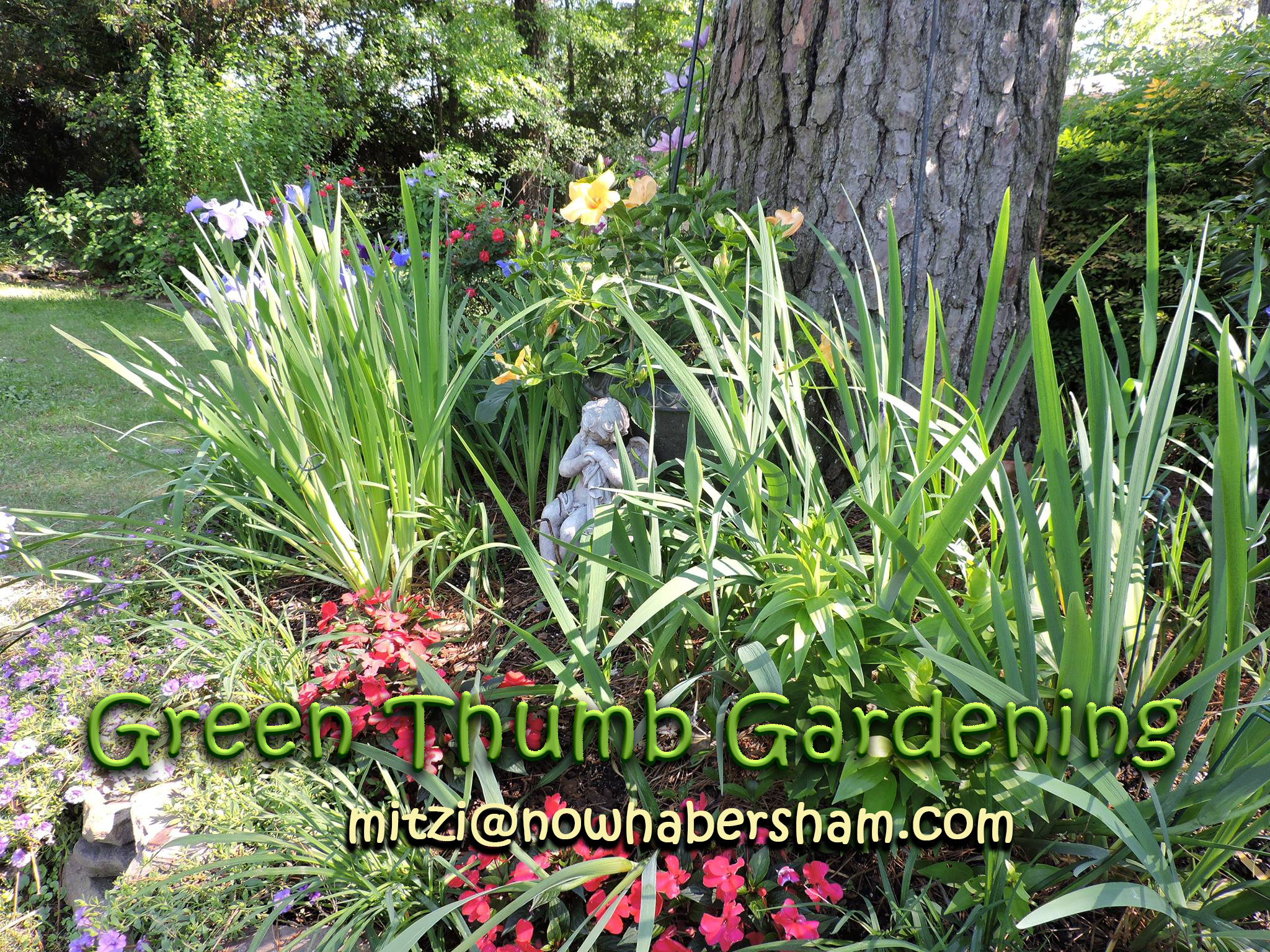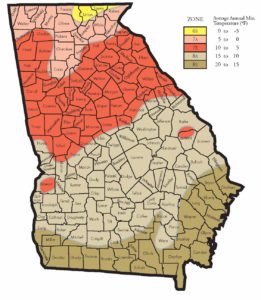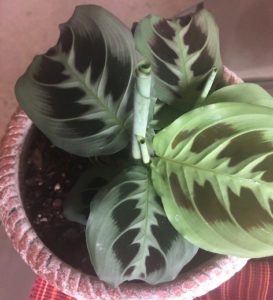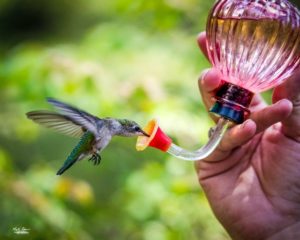
March Madness is underway, on the college basketball court and in the garden. Either way, you need to be “in the zone” to score points.
To be in the zone, first, you need to know your zone.
 In 1960, the United States Department of Agriculture published a map of the U.S. that delineated eleven “minimum winter temperature” zones. North Georgia was set in Zone 7, with winter lows between 0 and 10 degrees. In 1990, the map was revised and the former “10-degree difference” zones were divided into two sub-zones. Cobb county and above became Zone 7a and everything below that point down to Macon became Zone 7b.
In 1960, the United States Department of Agriculture published a map of the U.S. that delineated eleven “minimum winter temperature” zones. North Georgia was set in Zone 7, with winter lows between 0 and 10 degrees. In 1990, the map was revised and the former “10-degree difference” zones were divided into two sub-zones. Cobb county and above became Zone 7a and everything below that point down to Macon became Zone 7b.
And then in 2003, the USDA and the American Horticultural Society undertook yet another map revision, based on more recent weather data. According to that map, most of Georgia falls into Zone 8 with only mountainous north Georgia remaining Zone 7.
Are you confused yet? If it helps, most plant labels refer to the original 1960 USDA map. For safety’s sake and the best results in your garden, you can assume a plant marked Zone 7 will work successfully for you.
Why this “zone” thing is important
What we need to be most concerned about is the average last spring frost date. Zonal maps help guide us in the right direction. More than 100 years of records from the National Climatic Data Center show that the average date is between March 18 – April 16. That is not carved in stone, it could happen in late April but it’s a pretty good guideline for when to plant.
Tender plants might not make it or will surely struggle with a late spring hard frost. I have gone to great lengths to protect newly planted flowers and vegetation over the years with blankets and other coverings.
So what’s next on the to-do list in our zone
- The longer days and shorter nights will

Trimmed and fed Maranta is showing a lot of new growth. stimulate your houseplants to start growing again. Now is a good time to repot them if needed and give them a good feeding.
- Add organic matter to the soil to improve drainage.
- By the end of March, you should be safe to start the process of hardening off for transplant outside of your onions, parsley, and any other cool-season crops that are at least 5 weeks old. Select smaller rather than larger plants of broccoli, cauliflower, cabbage, and Brussels sprouts since overly mature plants exposed to low temperatures early in the season tend to bolt into flower too early.
- Direct sow carrots, Swiss chard, peas, collards, kale, kohlrabi, leaf lettuce, onions, parsley, parsnips, beets, leaf lettuce, radishes, and spinach as soil and weather conditions permit.
- On nice days, turn your compost pile. Or start one!
- Be careful working your garden soil! Working soil when it is still too wet creates compacted clots. Wait for dry spells.
- Clean up any leftover dried debris from garden beds and toss in the compost pile.
- Buy a notebook and use it to keep all your gardening information. List what you plant in the garden. Include the name of seed companies, plant name, variety, planting date, and harvest date. During the growing season keep notes on how well the plant does. If the variety is susceptible to disease, record what was used to treat any problems. All this information will be helpful in planning future gardens.
- Place birdhouses built this winter outdoors this month. Birds will begin looking for nesting sites soon.

- Don’t forget to mix up your hummingbird nectar and hang the feeders. They are migrating now and if you haven’t seen one yet, you will soon.
- Get a soil test if you haven’t already done so
- Right now is a great time to remove winter protection from any perennials you had in place.
- Fertilize grapes, raspberries, and blueberries before growth resumes.
In a few more days, we will have moved past the average frost date and you can really dig in, planting hanging baskets, containers and filling in with annuals in your flower beds including impatiens, geraniums, verbena, and some of those other fillers, thrillers, and spillers.
Happy planting!

